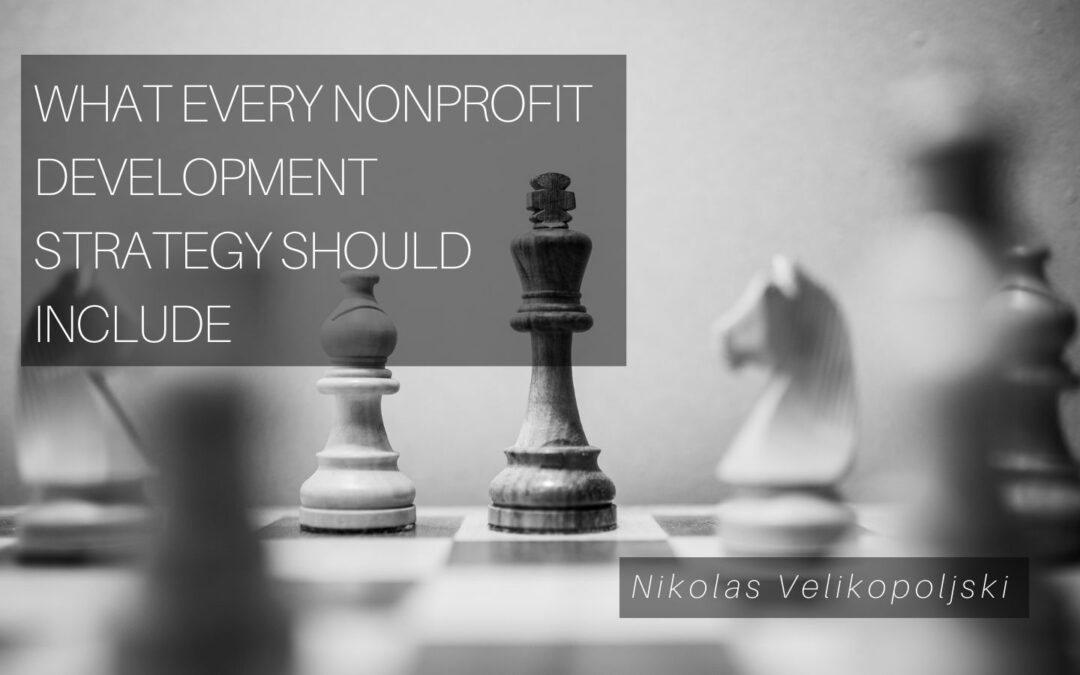Developing a comprehensive and effective nonprofit development strategy is essential for an organization’s long-term success and sustainability. A well-rounded strategy ensures the nonprofit can secure the necessary resources, build strong relationships with donors and supporters, and achieve its mission.
Here are key components that every nonprofit development strategy should include:
Mission and Goals:
Clearly define the organization’s mission and goals. A development strategy should align with and support the nonprofit’s mission and vision.
Donor Identification and Segmentation:
Identify target donor segments based on their interests, demographics, giving capacity, and affinity for the organization’s cause.
Relationship Building:
Focus on building authentic and meaningful relationships with donors and supporters. Cultivate a stewardship, gratitude, and communication culture that fosters long-term donor engagement.
Diversified Fundraising Streams:
Create a diversified fundraising plan that includes multiple revenue streams. Relying solely on one source of funding can be risky. Explore various fundraising avenues, including individual giving, major gifts, corporate partnerships, grants, events, and planned giving.
Individual Giving:
Develop a robust individual giving program to engage donors at various giving levels. This includes strategies such as direct mail campaigns, online fundraising, recurring giving programs, and donor recognition initiatives.
Major Gifts and Donor Cultivation:
Establish a strategy to identify, cultivate, and solicit major gifts from high-capacity donors. This involves personalized stewardship, cultivation events, one-on-one meetings, and the development of compelling cases for support.
Corporate and Foundation Partnerships:
Explore partnerships with corporations and foundations that align with the organization’s mission and values. Develop strategies to engage with potential corporate sponsors or grant-making foundations.
Grant Writing and Management:
Develop a systematic approach to grant writing and management. Research grant opportunities, develop compelling proposals, and establish a grant management system to ensure compliance and reporting.
Events and Community Engagement:
Plan and execute events that engage the community, raise awareness about the organization’s mission, and generate financial support. Events can include galas, auctions, walks, or peer-to-peer fundraising campaigns.
Measurement and Evaluation:
Establish measurable goals and key performance indicators (KPIs) to assess the effectiveness of the development strategy. Regularly monitor and evaluate fundraising efforts, donor retention rates, return on investment, and overall fundraising performance.
Board Engagement and Fundraising:
Engage board members actively in fundraising efforts. Establish clear expectations and provide training and resources to empower board members to contribute to the organization’s development efforts.
Planned Giving:
Consider integrating planned giving into the development strategy. Encourage donors to include the organization in their estate plans or make other gifts. Planned giving provides long-term sustainability and enables donors to leave a lasting legacy.
Continuous Learning and Adaptation:
Nonprofit development strategies should be dynamic and adaptable. Continuously evaluate and learn from successes and challenges. Stay updated on industry trends, best practices, and emerging fundraising strategies.
Remember, a nonprofit development strategy should be tailored to the organization’s unique needs, goals, and resources. Regularly review and update the strategy as circumstances evolve. By incorporating these essential elements into your nonprofit development strategy, you can build a solid foundation for sustainable growth, strengthen donor relationships, and significantly impact your community.

